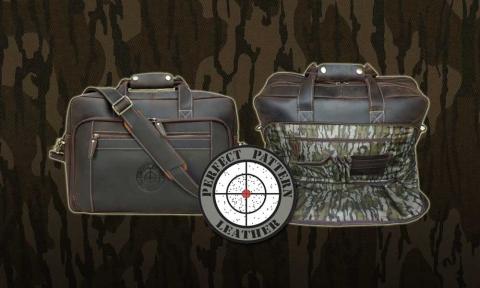Written by Jessi Cole
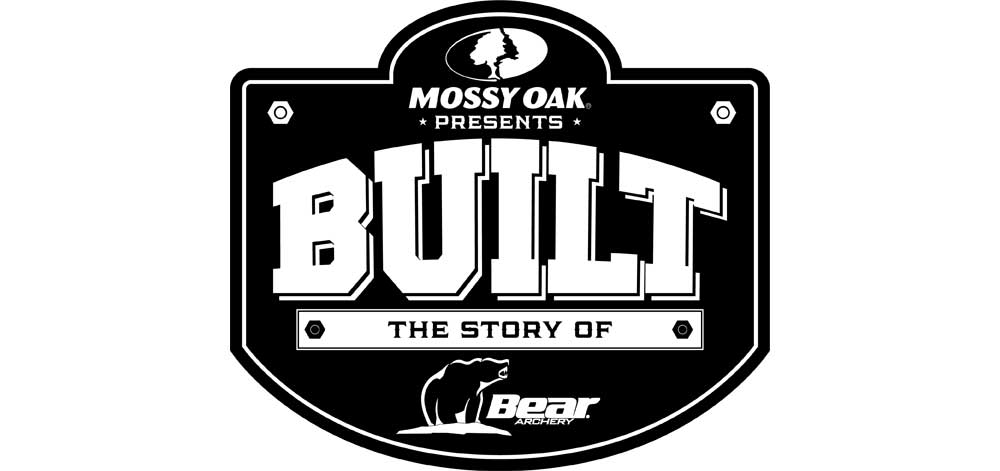
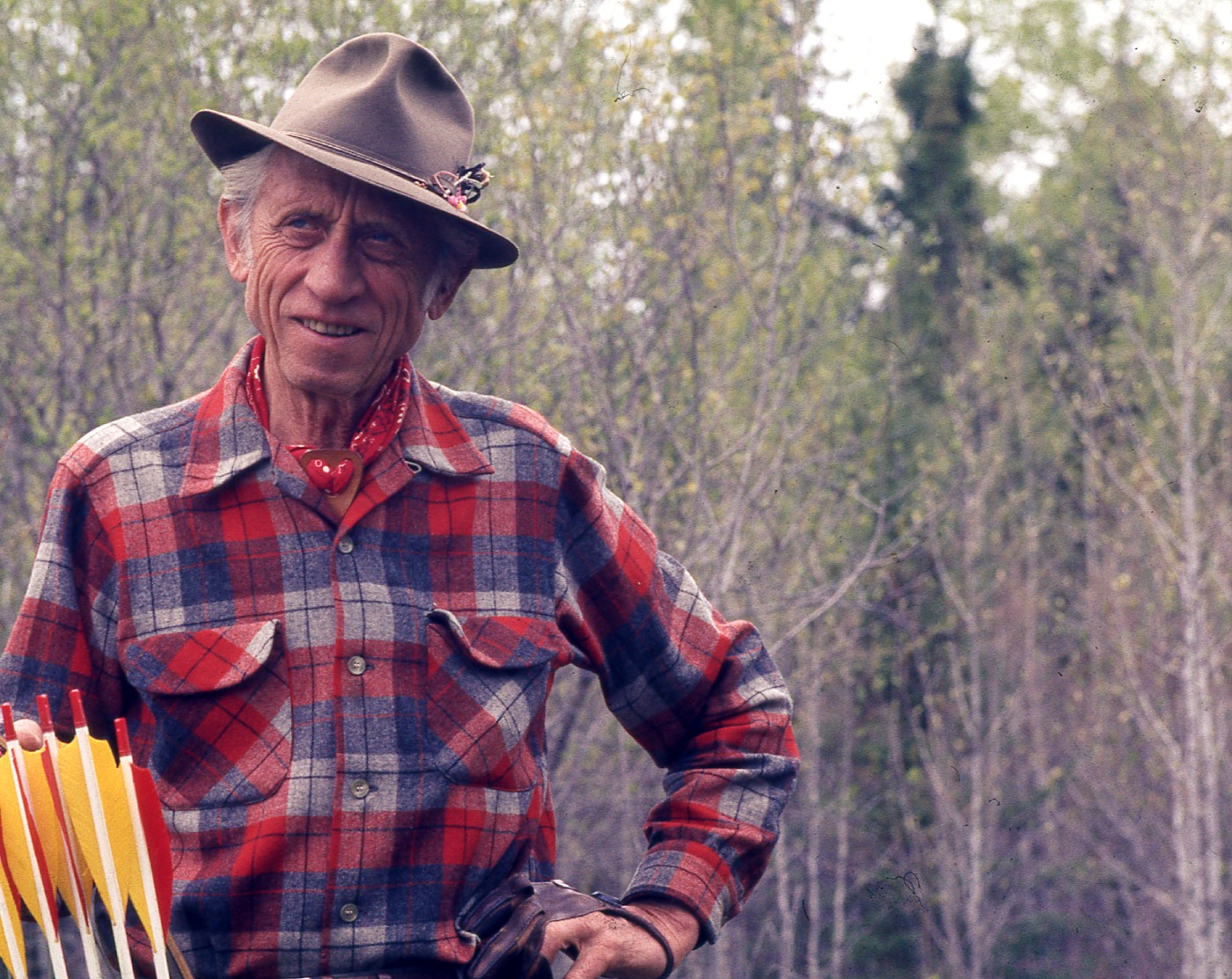
Fred Bear, the man dubbed as “The Gentleman Woodsman” and “the Papa Bear of the Great Outdoors,” almost single-handedly brought about the renaissance of modern bowhunting.
Mr. Bear had grown up trapping and hunting, but his first experience with archery began at age 25 after he saw the first bow hunting film ever produced, Alaskan Adventures, at the local picture show. Of course, at the time, 1927, what we now know as traditional archery was just simply archery. Art Young, the producer and hunter in the film, and Mr. Bear later became friends by a chance encounter and the two were among the first handful of archers in the United States, Mr. Bear focusing primarily on target archery in the beginning. It didn't take long for Mr. Bear to take his bow to the woods, though, and he killed his first deer with his bow in 1935.
In 1929, the Great Depression had begun and the building in which Mr. Bear worked burned to the ground, effectively rendering his coworker Charles Piper and him unemployed. Together they pooled $1,200 together to buy sewing machines and the equipment necessary to begin Bear Products, a silk screen and print advertising business in Detroit, Michigan. Their main clients were automobile manufacturers.
Though he worked hard to keep his new advertising business profitable, Mr. Bear's mind was beginning to focus on crafting and selling archery gear. Mr. Bear had developed an obsession, one that consumed his mind and began to consume his business.
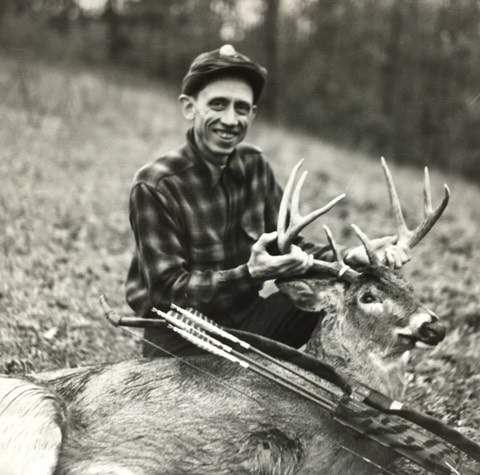
A young Fred Bear with a mature buck.
Mr. Bear’s began developing innovative products using scraps of leather and the sewing machines in his office to help him in tournaments and in the field. He began designing and developing leather shooting gloves, arm guards, and finger tabs to sell at competitions and local shoots.
He patented the archery glove in 1937, and demand for his archery products steadily grew. He hired Nels Grumley, a bowyer now hailed as one of the greatest of all time, to help him design and build bows, all still under the Bear Products name. These bows were all hand built from a single piece of wood, usually Osage Orange, and used handmade Irish linen as the bowstring. They may be considered crude compared to today's archery equipment, but really these old bows are works of artistry and ingenuity.
In the early days of Bear Archery, he sold products to archers at shoots and sports shows, advertised in at local markets and sold to hardware stores. In order to help Bear Archery get off the ground, Mr. Bear had to get the word out about bow hunting. He’s been famously quoted as quipping, “I not only had to make a product, but I had to make a market for it, too.”
He began to film his hunts to show that hunters could be successful in the woods with a bow and arrow. He had an old camera with a gooseneck lens, his signature safari-style hat and red flannel coat, and a determination to not only prove his products, but prove the sport of archery as a whole.
Because of his determination, Fred Bear was able to convince Michigan to open their first-ever archery season in 1937. Not only was this Michigan’s first bow season, but it was also the country’s first. Other states, like Pennsylvania, began to take notice and follow suit, and bow hunting began its journey to becoming an established sport across the nation.
By 1939, the archery side of Bear Products was the only thing in Mr. Bear’s mind, and he sold the advertising side of the company to his partner Charles Piper in 1940, renamed the company Bear Products by Grumley, and settled into focusing on his passion along with bowyer Nels Grumley.
Six years later, Mr. Bear patented yet another revolutionary archery design: the quiver that attached to the bow itself instead of the hunter’s back or side. He was constantly innovating, improving, perfecting the state of bow hunting.
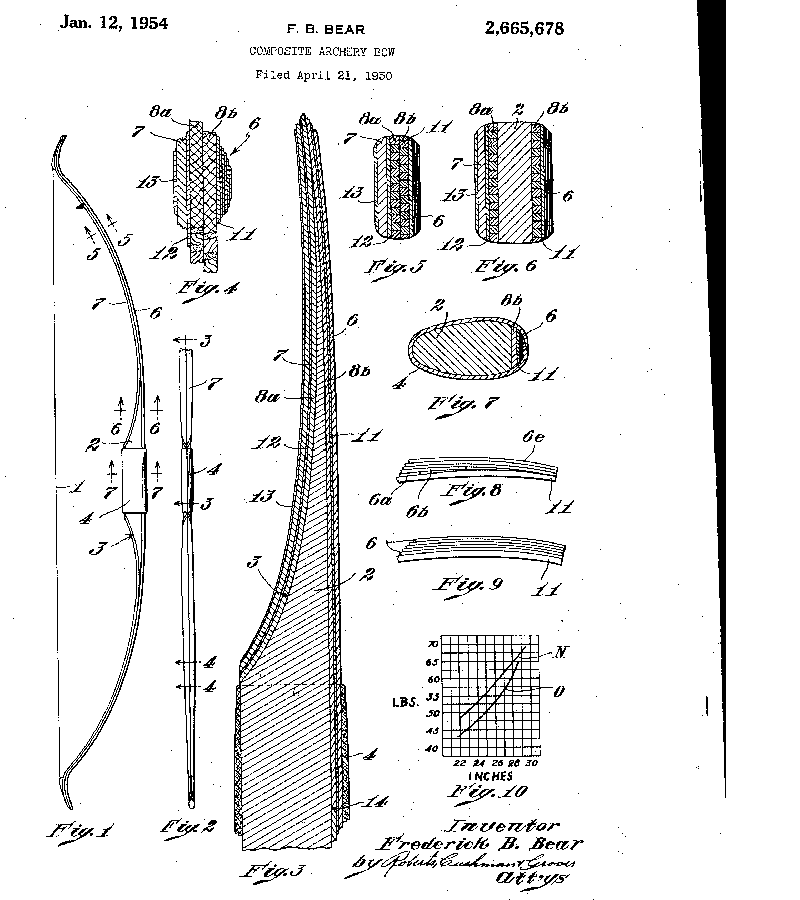
A patent for Fred Bear's composite bow design filed in 1950.
In 1947, when demand for their products outgrew their current space, Mr. Bear moved the company to Grayling, Michigan, where they could work out of a larger facility and keep up with the burgeoning popularity of archery equipment. Grumley and Mr. Bear disagreed on the new production plan; simply put, Grumley believed bows should be entirely handmade while Mr. Bear believed in a little simple machinery work. The two parted ways and Mr. Bear’s new machinery allowed his bows to quickly become more advanced and to reach more consumers. The company was renamed to Bear Archery, the iconic name we know today.
Innovation continued. Mr. Bear filed a patent for the use of fiberglass on bows in 1948, a design that has since been used on every modern bow. The strong and flexible nature of the fiberglass backing revolutionized an archer’s weapon. He later developed the Fred Bear Razorhead, a unique design that sold as number one on the market for a number of years and continues to sell well today.
Fred Bear went on to harvest many animals across the world with his bow and arrows, exotic trophies like a polar bear, a Bengal tiger, and a world record brown bear. These mounts were displayed in the Grayling Fred Bear Museum and his hunts were featured in the mainstream media, even on The Tonight Show with Johnny Carson.
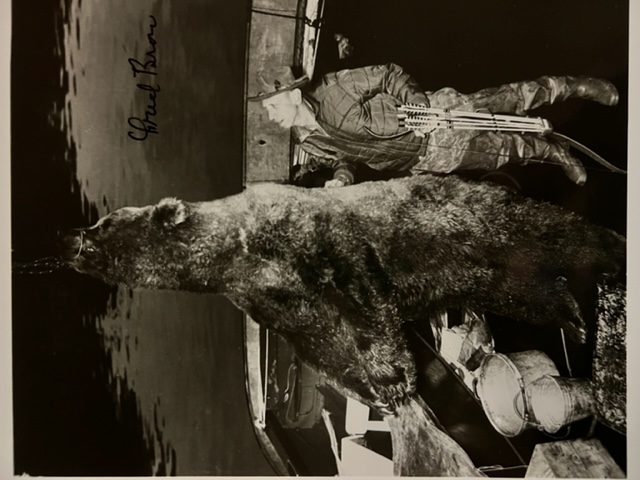
Fred Bear with his record brown bear. For scale, FB was about 6 feet tall! Mr. Bear held archery records for the largest Alaskan brown bear, stone sheep, mountain caribou, barren-ground caribou, and Canada moose.
He was inducted into the Sporting Goods Hall of Fame and the Archery Hall of Fame, and a museum filled with mementos from hunts around the world bloomed in Grayling, Michigan, where he was known as a local hero.
Mr. Bear founded the Fred Bear Sports Club, a club that created a community of passionate hunters. It had its own quarterly newsletter, The Sky, and celebrated accomplishments of archers in the form of badges, such as an elk patch or a bear patch or even an “I Shot and Missed Award.” The very first badge one got as a member, however, bore the phrase, “Hunters Respect Wildlife.” Though Mr. Bear celebrated exciting hunts and the thrill of a trophy, he never failed to first and foremost respect his quarry.
He is quoted as saying, “If you consider an unsuccessful hunt a waste of time, then the true meaning of the chase eludes you all together,” as well as, “A hunt based only on trophies taken falls far short of what the ultimate goal should be.”
He was always willing to listen to archers. According to some, he could give you advice without making you feel like you should have thought of it yourself. His relationship with the hunter was far and above his priority, always, and he strived to create a product for any and all levels of income—he wanted everyone to be able to shoot a bow if they’d like.
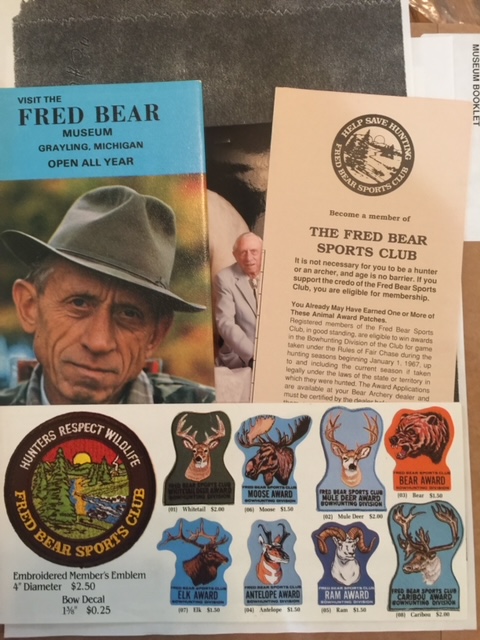
Fred Bear Sports Club memorabilia, including the Hunter's Respect Wildlife badge. Other Sports Club collectibles include Fred Bear watches, cigarette lighters, bow fishing reels, and knives.
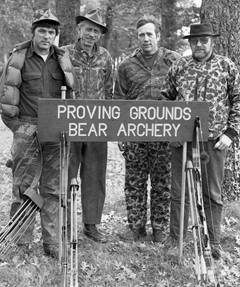
"He was always willing to listen to archers."
In 1968, when Mr. Bear was 66 years old, he sold Bear Archery to Victor Comp Corporation, which owned other sporting brands like the Daisy BB Guns. He stayed on as President and CEO and continued to run the day-to-day operations and enjoyed his craft and relationship with the consumers.
Two years later, in 1970, the compound bow was introduced to the market for the first time, an event, we know now, as incredibly market-altering. Most people would naturally suspect that Mr. Bear was averse to the rapid popularity of the compound bow and the resulting shrinking sales of traditional archery equipment, but he was a bow hunting supporter through and through. In fact, he was known to occasionally shoot a compound bow. He never shot an animal with one, though. He did have his preferences, after all.
Neil Byce, Bear Archery’s now Director of Operations and longtime apprentice and friend of Mr. Bear, says, “Fred Bear is archery. Fred Bear didn’t care about compound vs traditional. He cared about the sport. That’s just my take.”
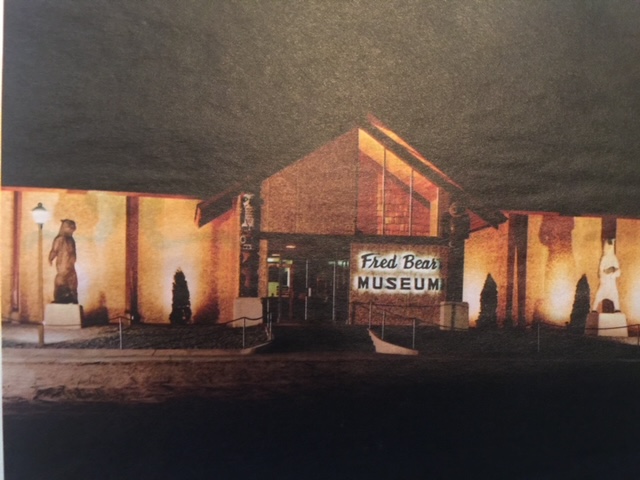
The Fred Bear museum was sold to alleviate financial strain in 2003 to Bass Pro Shops, which now displays much of his memorabilia around the country in their stores.
Adjusting with the changing market, Bear Archery released their first compound bow in 1975, a model called The Alaskan. It was compact at 48 inches long and it had six wheels. It did alright in terms of sales, but it wasn’t until the Whitetail Hunter, priced at $50, was released by Bear Archery a year and a half later that their compound bow sales really skyrocketed. In fact, over time, they sold about 1.5 million of that model alone.
With the explosion in demand, Bear Archery had an urgent need to expand and allow for more production. In 1978, the company moved from Grayling, Michigan to a new 150,000 square foot building on 30 acres of land in Gainesville, Florida. As further proof of the company’s authenticity, an outdoor target range in the front yard has welcomed employees and visitors to the building since day one and remains in use still today.
As sales shifted, the company’s product selection began to mirror the popularity and demand of the archery community. Soon compound models took over and traditional archery models were few. Bear Archery did, however, come out with a limited-edition collectible takedown recurve in 1982 called the Fred Bear Signature Bow. It originally sold for $1,000 (a lot of money in 1982!) with limbs made with yew wood and the riser fashioned from East Indian rosewood and African ebony. It also featured gold plated sockets and a hand etched Bear Archery logo. Only 999 were made; these works of art now fetch a cool $10,000 or so on eBay—if you’re lucky enough to find one.
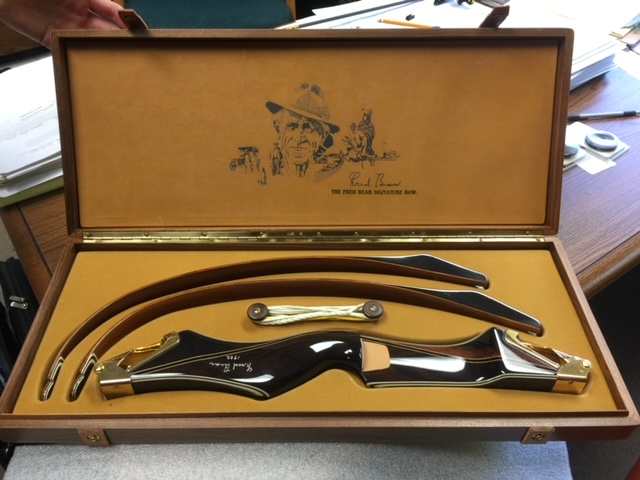
1 of the 999 Fred Bear Signature Bows in existence. As far as Fred Bear collectibles go, this is about as coveted as it comes.
And in 1988, Mr. Bear, an active archer and beloved leader until the very end, died, leaving behind his wife, Henrietta Bear, and a step-daughter.
His company pressed on, continuing to excel because of the example and measures he left in place, and Bear Archery reserves Mr. Bear’s parking spot at the office to this day. There’s always a place for him at the place he built.
In 1997, the company began a revival of their traditional archery gear and bows. They wanted to return to their roots, something they can continue to hang their hat on as being “the best of.”
Byce says, “The traditional line is the root of our company. It’s the backbone of who we were, what we came from, and where we started.”
A TRADITIONAL BOWHUNTER'S REVERENCE FOR FRED BEAR
In fact, in 2009, Bear Archery began brainstorming a big launch to garner attention to their traditional bows. They went to traditional shoots and asked consumers: “What bow would you most like us to bring back?”
Overwhelmingly, traditional archers asked for a revival of the 1959 Kodiak, a bow made the year Byce was born. He had trained as a bowyer since 1980, starting by molding traditional bows, cutting wood, experimenting with bow designs under the supervision and encouragement of Mr. Bear himself.
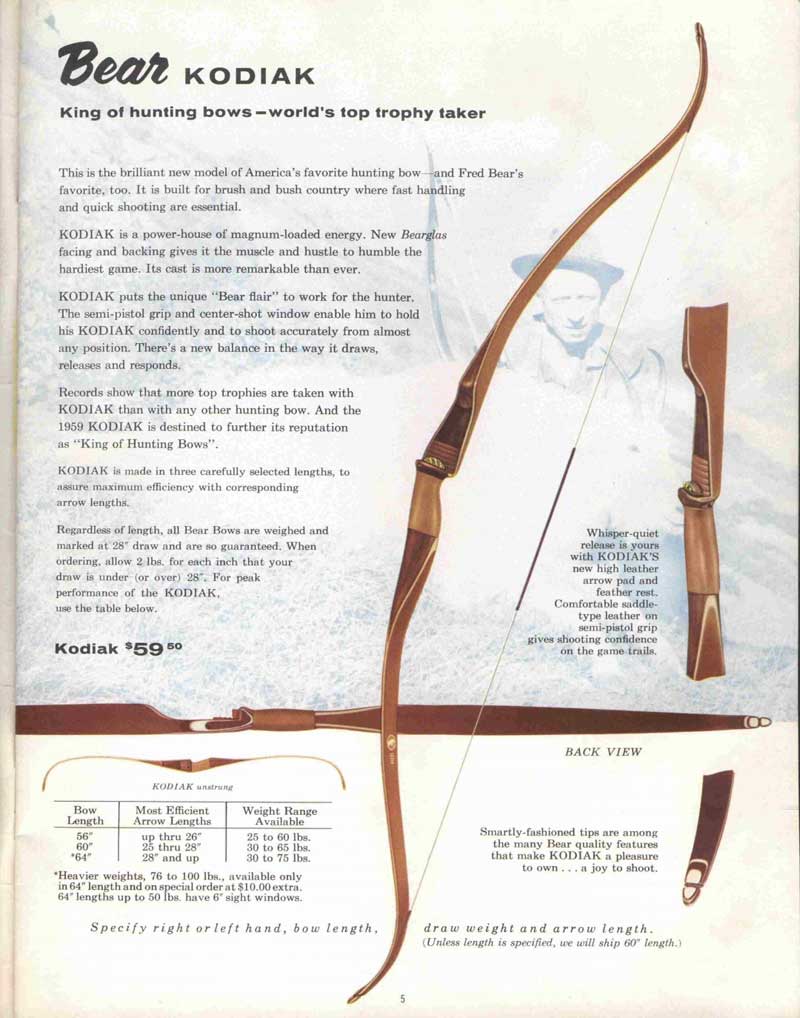
The catalog page for the original 1959 Kodiak.
Byce began his mission. With no existing designs for the ’59 Kodiak anywhere in the offices, he had to start from scratch. He obtained a pristine version of the bow through connections and laid it out in his office. He measured, reconfigured, and designed for months, taking painstaking measures to get colors and wood correct, someone to make feather rests made of turkey feathers for each and every bow, obtaining enough Bolivian Rosewood and Purple Heart wood for thousands of risers, and matching, of course, the signature copper medallion that was introduced in the ’59 Kodiak.
Byce and team relaunched the highly anticipated and heavily labored over Kodiak in Fall of 2012 to great success and acclaim. Not only was it a significant launch of a product, but its success significantly lifted the entire traditional sport.
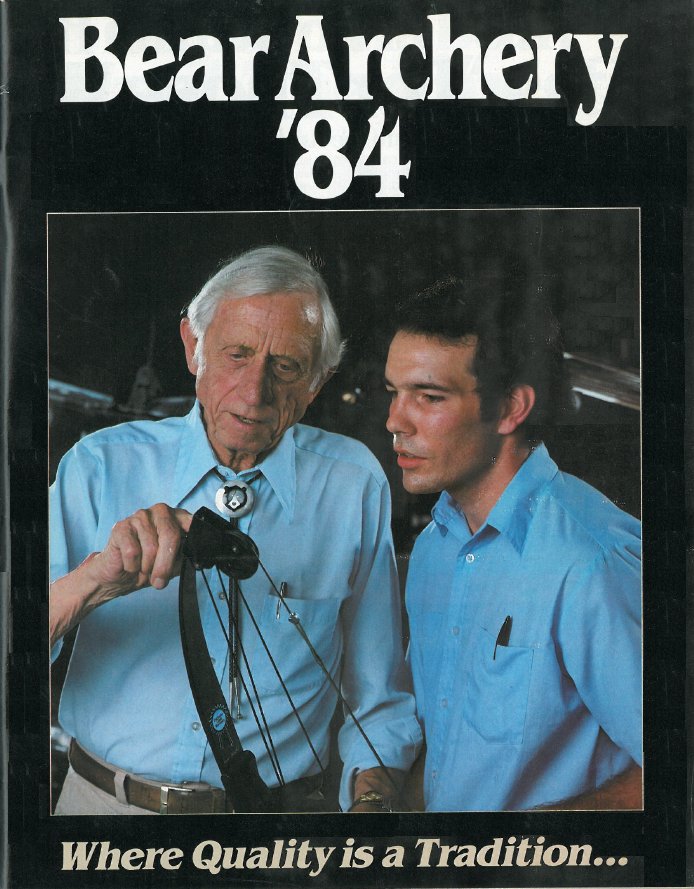
Fred Bear and Neil Byce on the '84 cover of the Bear Archery catalog. Though Byce didn't realize it at the time, it seemed like Mr. Bear had an idea for who would continue the charge on bow designs and business leadership after him.
As for Bear Archery today, it’s grown substantially since its humble beginnings in 1933. They’ve taken in Jennings Compound Bows, Carolina Whisker Biscuit, Trophy Ridge, and Cajun Bowfishing under their umbrella, and they release a new flagship bow each year, update models each year, partner with outdoor brands like Mossy Oak on patterns and designs for their bows, and constantly look ahead to what the consumer needs to be successful.
And despite its success, Bear Archery remains a tight-knit family-oriented company. Neil Byce’s father worked for Mr. Bear, designing bows like the Montana longbow and the Signature Bow, for over thirty years. Neil and his father even collaborated on a model called the Cheyenne.
Many more families have grown up with the Bear Archery family. The company is a living example of their mission to make sure archery continues with generation after generation.
Byce says, “We want the archer to feel good about using our bows. Something that they’re proud to own.”
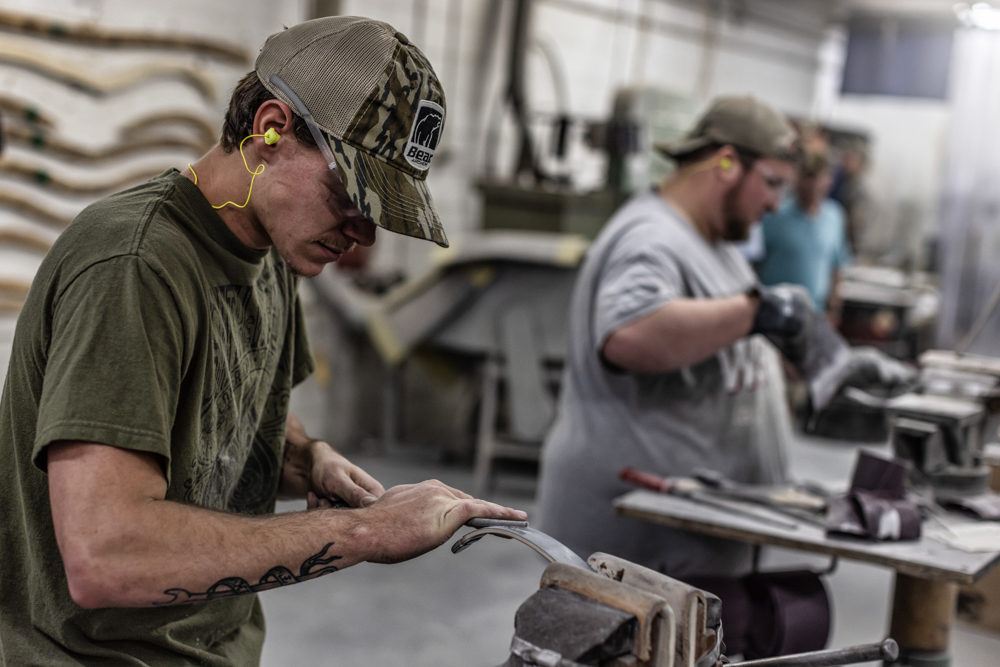
A Bear Archery employee hand molds parts for a traditional bow. Most of the presses and a few other pieces of equipment have been in use by Bear Archery since the 1950s.
Again, the concept of the love of the hunt itself is reinforced with Byce’s recollection of his first archery hunt on his own, “I remember my excitement. I remember my miss! But it’s an experience. If you don’t do it, you won’t experience all those other moments outside with the wildlife. The feeling I get when I’m hunting with a bow, even though I’ve been doing it for so many years—the excitement is still just indescribable.”
He continues, “I feel good about what I learned from Mr. Bear. I feel good about the company, where it’s going.”
The Bear Archery values can be summed up with Mr. Bear’s quote, “Go afield with a good attitude, with respect for the wildlife you hunt and for the forest and fields in which you walk. Immerse yourself in the outdoor experience. It will cleanse your soul and make you a better person.”
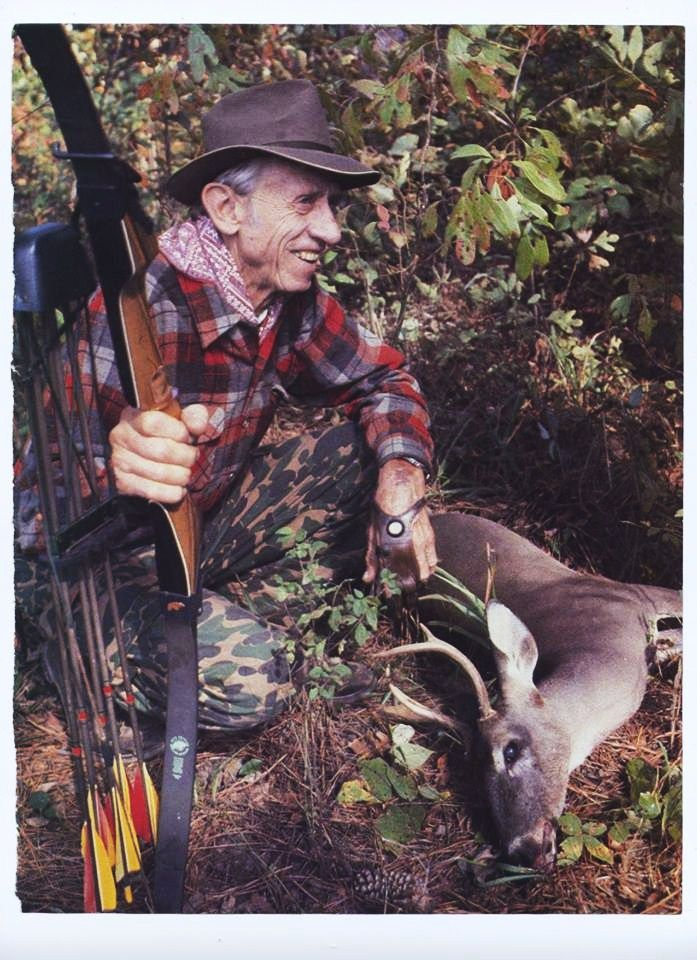
Fred Bear in his well-worn and well-known red flannel coat. He remained an active archer his entire life. To learn more about Mr. Bear, read his biography and field notes.
Mossy Oak is proud to partner with Bear Archery. To shop the new line of Mossy Oak x Bear Archery compound bows, visit here.
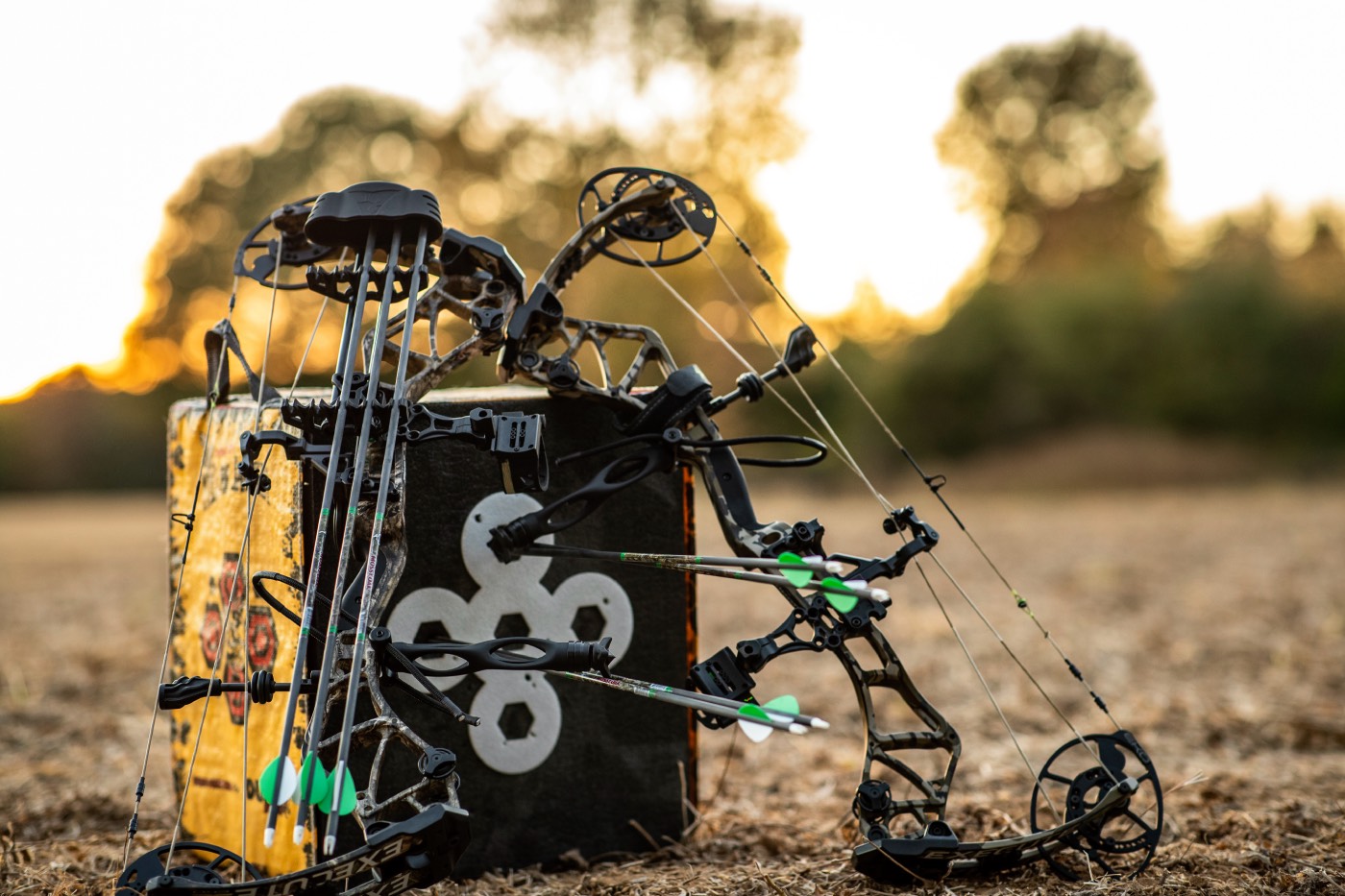
Pictured: Two Bear Archery compound bows decorated in Mossy Oak Original Bottomland and Mossy Oak Country DNA














